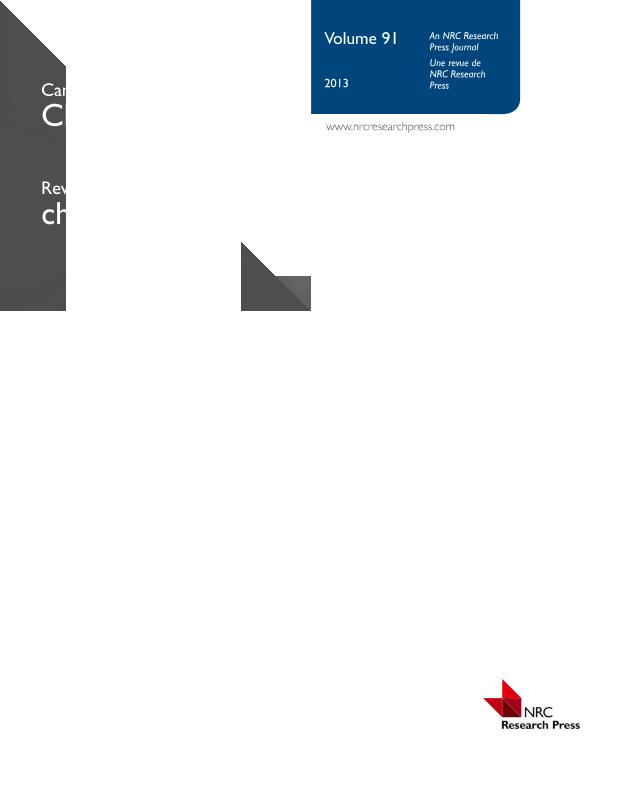Mostrar el registro sencillo del ítem
dc.contributor.author
Garcia, Jousy
dc.contributor.author
González, Juan Carlos
dc.contributor.author
Frascaroli, María Inés
dc.contributor.author
García, Silvia Isabel
dc.contributor.author
Blanes, Patricia Silvia
dc.contributor.author
Correia, Isabel
dc.contributor.author
Costa Pessoa, João
dc.contributor.author
Sala, Luis Federico

dc.date.available
2016-06-06T20:59:23Z
dc.date.issued
2013-03
dc.identifier.citation
Garcia, Jousy; González, Juan Carlos; Frascaroli, María Inés; García, Silvia Isabel; Blanes, Patricia Silvia; et al.; Spectroscopic studies of vanadium biosorption on different types of carbohydrate biomass; Canadian Science Publishing; Canadian Journal of Chemistry; 91; 3; 3-2013; 186-195
dc.identifier.issn
0008-4042
dc.identifier.uri
http://hdl.handle.net/11336/6057
dc.description.abstract
The biosorption potential of different types of carbohydrate biomass is investigated to evaluate their application to purify water contaminated by vanadium in environmentally relevant oxidation states (VIV and VV). Spectroscopic studies were done by electron paramagnetic resonance (EPR), vanadium nuclear magnetic resonance (51V NMR), circular dichroism (CD), and electronic absorption in the visible range (vis). Both d-galacturonic and d-glucuronic acids are major components of plant cellular wall polysaccharides. The interaction of VIV with the model ligands d-galacturonic and d-glucuronic acids showed that complexation starts at low pH values (pH 3) and that carboxylate and sugar–OH groups, as well as water molecules, are involved in the coordination. At pH > 4.5, coordination promotes the sugar–OH deprotonation and new species form with the ligand chelating the metal ion via oxygen atoms of carboxylate and of adjacent sugar–O− donors. The studies with pectin and citric acid show the ability of both compounds to partially reduce VV to VIV in solution and the EPR parameters suggest coordination of carboxylate, sugar–OH, and water molecules. The interaction of VV with biomass from different sources shows that grapefruit, orange peel, and plane tree fruit are the most suitable candidates for the biosorption of vanadium. Studies with VV and grapefruit (or the grainless stalk of corn) indicate that the reduction takes place at the “surface” of the solid. EPR studies on the interaction of VIV with different carbohydrate biomass show their ability to complex high amounts of VIV. We propose that the biosorption mechanism, when the biomass is in contact with VV species, involves sorption, reduction, and retention at the surface level of VIV coordinated by oxygen donors of the biomass. When the interaction starts with VIV, the main process just involves the uptake of the metal ion at the surface level.
dc.format
application/pdf
dc.language.iso
eng
dc.publisher
Canadian Science Publishing
dc.rights
info:eu-repo/semantics/openAccess
dc.rights.uri
https://creativecommons.org/licenses/by-nc-sa/2.5/ar/
dc.subject
Vanadium
dc.subject
Biosorption
dc.subject
Biomass
dc.subject
Electron Paramagnetic Resonance (Epr)
dc.subject
D-Glucuronic Acid
dc.subject
D-Galacturonic Acid
dc.subject.classification
Físico-Química, Ciencia de los Polímeros, Electroquímica

dc.subject.classification
Ciencias Químicas

dc.subject.classification
CIENCIAS NATURALES Y EXACTAS

dc.title
Spectroscopic studies of vanadium biosorption on different types of carbohydrate biomass
dc.type
info:eu-repo/semantics/article
dc.type
info:ar-repo/semantics/artículo
dc.type
info:eu-repo/semantics/publishedVersion
dc.date.updated
2016-06-01T13:51:24Z
dc.journal.volume
91
dc.journal.number
3
dc.journal.pagination
186-195
dc.journal.pais
Canadá

dc.journal.ciudad
Otawa
dc.description.fil
Fil: Garcia, Jousy. Universidad Nacional de Rosario. Facultad de Cs.bioquimicas y Farmaceuticas. Departamento de Quimica y Fisica. Area Inorganica; Argentina
dc.description.fil
Fil: González, Juan Carlos. Universidad Nacional de Rosario. Facultad de Cs.bioquimicas y Farmaceuticas. Departamento de Quimica y Fisica. Area Inorganica; Argentina. Consejo Nacional de Investigaciones Científicas y Técnicas. Centro Científico Tecnológico Rosario. Instituto de Química Rosario; Argentina
dc.description.fil
Fil: Frascaroli, María Inés. Universidad Nacional de Rosario. Facultad de Cs.bioquimicas y Farmaceuticas. Departamento de Quimica y Fisica. Area Inorganica; Argentina
dc.description.fil
Fil: García, Silvia Isabel. Universidad Nacional de Rosario. Facultad de Cs.bioquimicas y Farmaceuticas. Departamento de Quimica y Fisica. Area Inorganica; Argentina
dc.description.fil
Fil: Blanes, Patricia Silvia. Universidad Nacional de Rosario. Facultad de Cs.bioquimicas y Farmaceuticas. Departamento de Quimica y Fisica. Area Inorganica; Argentina. Consejo Nacional de Investigaciones Científicas y Técnicas. Centro Científico Tecnológico Rosario. Instituto de Química Rosario; Argentina
dc.description.fil
Fil: Correia, Isabel. Universidade Técnica de Lisboa. Instituto Superior Técnico. Centro de Química Estrutural; Portugal
dc.description.fil
Fil: Costa Pessoa, João. Universidade Técnica de Lisboa. Instituto Superior Técnico. Centro de Química Estrutural; Portugal
dc.description.fil
Fil: Sala, Luis Federico. Universidad Nacional de Rosario. Facultad de Cs.bioquimicas y Farmaceuticas. Departamento de Quimica y Fisica. Area Inorganica; Argentina. Consejo Nacional de Investigaciones Científicas y Técnicas. Centro Científico Tecnológico Rosario. Instituto de Química Rosario; Argentina
dc.journal.title
Canadian Journal of Chemistry

dc.relation.alternativeid
info:eu-repo/semantics/altIdentifier/doi/http://dx.doi.org/10.1139/cjc-2012-0208
dc.relation.alternativeid
info:eu-repo/semantics/altIdentifier/url/http://www.nrcresearchpress.com/doi/abs/10.1139/cjc-2012-0208#.V1WB2vnhCJA
dc.relation.alternativeid
info:eu-repo/semantics/altIdentifier/doi/10.1139/cjc-2012-0208
Archivos asociados
